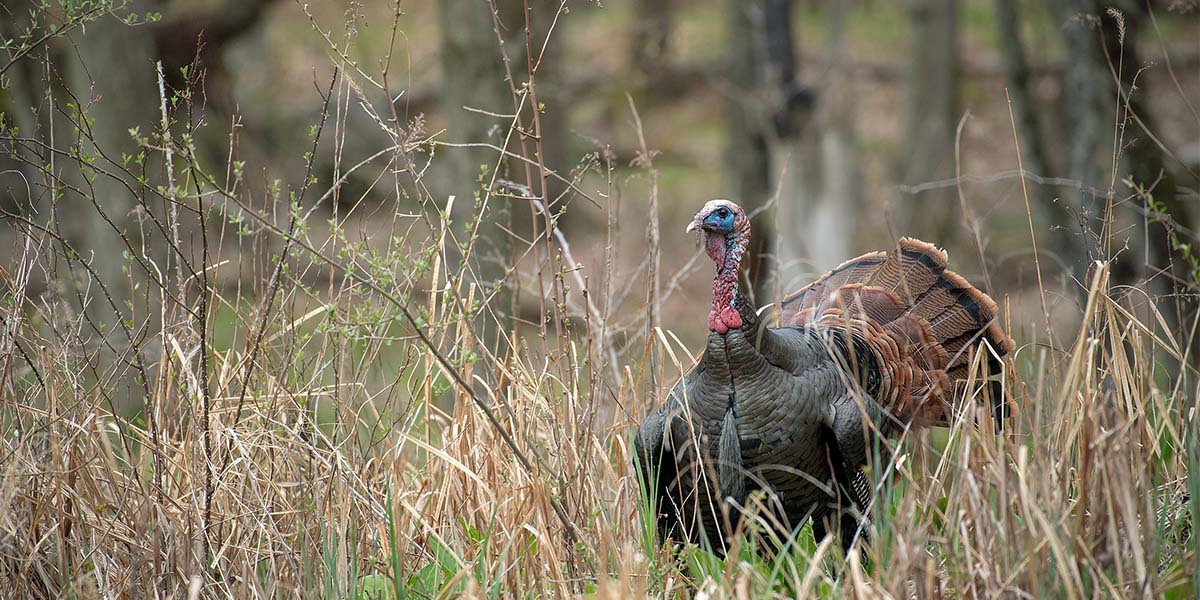
If you like turkeys, you’ve probably heard the name Will Primos. This man has helped generations of hardcore hunters speak to toms. Primos is a legendary turkey killer who built a game call and decoy business around his name.
Lucky for me, when I reached out to Will, a big storm was headed toward the South and shutting down the gobblers. I took advantage of this hunt-halting weather to talk longbeards.
Killing Toms off the Roost
MM: What’s your favorite trick to kill a tom off the roost?
Will Primos: In the mornings, a lot of people get too close. By too close, I mean within 100 yards of the roost. And then they start calling to the tom before he flies off the roost. The tom may gobble to your calls, but the natural way of things is the hen is supposed to come to the tom. Once he’s got some hens down below him, he’ll fly down to his ladies. I don’t play this game when I’m hunting.
When I set up on a tom in the roost, I keep my distance—no closer than 150 yards. The first noise I’ll make is a fly-down with a hen wing. I keep one in the back of my vest. I’ll take the wing and flap it and let it brush the side of the tree. Make some noise. Turkeys flying down aren’t quiet. The tom’s hearing is way better than yours. He’ll be able to hear and pinpoint where the noise is coming from, and hopefully be worried about potentially losing this hen you’re pretending to be.
Once I’ve done the fly-down with the hen wing, I’ll use that same wing to scratch at the ground. This emulates a hen feeding and acting normal. Once I know that tom is on the ground, then I’ll start my calling, but not until I’m certain he’s flown off the roost.
Preferred Decoy Setup
MM: What are your favorite decoy setups?
WP: I don’t use decoys all the time, and every piece of advice in turkey hunting always comes with a caveat of being situationally dependent. That’s just the way turkey hunting is; it’s playing chess with these wily birds. But my favorite kind of decoy setup is a strutting tom decoy that has a movable tail fan paired with a hen decoy. Now, it has to be real tail feathers on the movable fan. There’s something about those real feathers, especially when I pull the string attached to the decoy to make the fan move. Turkeys respond to those fan feathers moving better than anything fake.
I always use Armor-All on my decoys. They sell it in a little tube with wipes. That’s what I wipe my decoys with when setting up. It takes the dust off and gives them a sheen that makes a huge difference.
Using Terrain To Kill Longbeards
MM: Do you take advantage of terrain features while targeting toms?
WP: Know this: a turkey is the opposite of elk when you’re calling one in. A tom is not going to come into your calls from above you in terrain. Now, why is that?
If a tom sees danger as he’s walking down to the call, he can’t turn around and easily escape up the hill. It’s going to make it incredibly difficult for that turkey to get away by running and flying uphill. Knowing this, I’ll always set up and call to a tom that is below me. If he sees danger, he can turn around, take a couple steps, and push off with those drumsticks to take flight. That’s how he stays alive, and he knows that.





Conversation